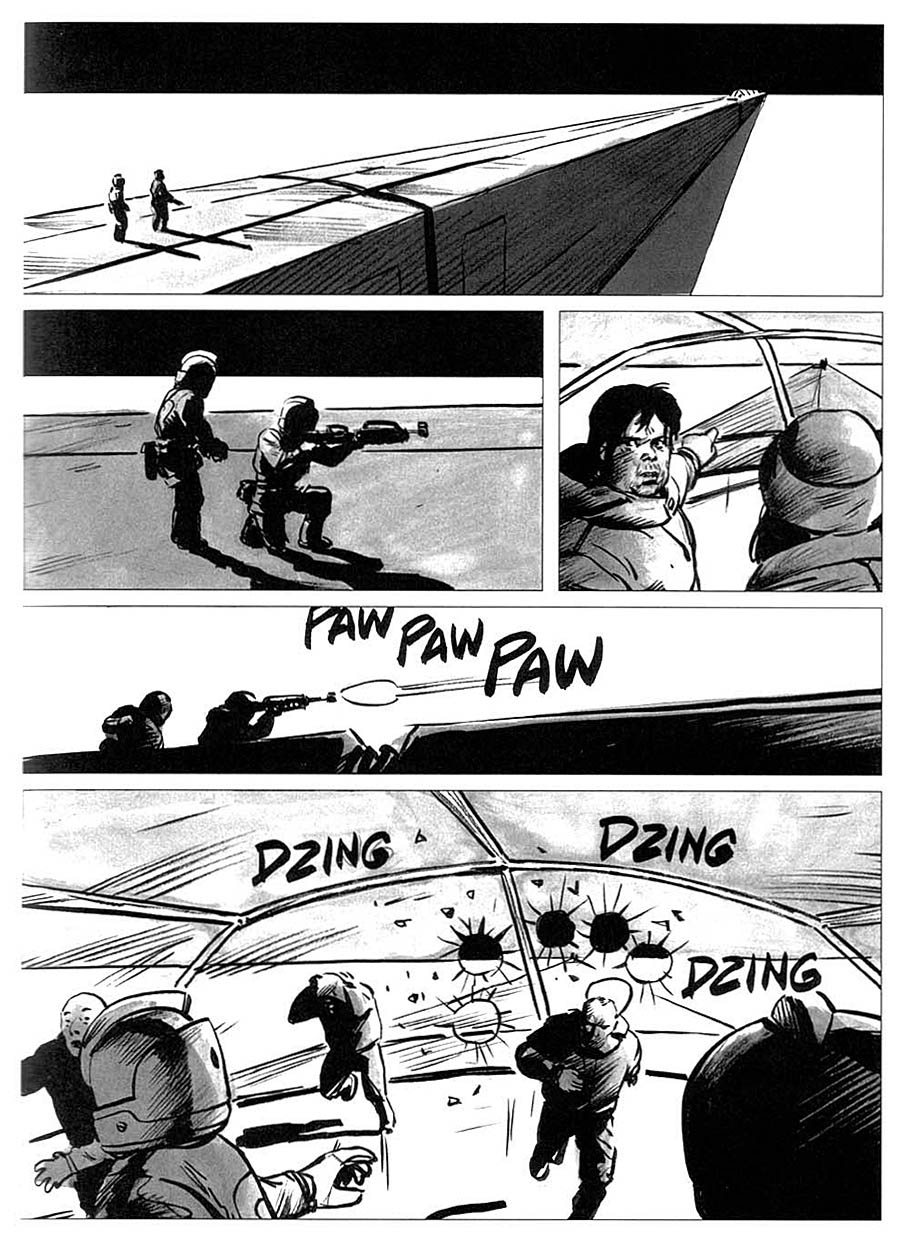
Idioma original: French
Original title: Snowpiercer
Year of publication: 1982 (first album); 1999 and 2000 (second and third albums)
Translation: Diego of the Saints
Valuation: Highly recommended
How is summer going? How are you coping with the heatwave? August 15th (obviously, I’m referring to those who read us from the northern hemisphere, lucky ones down there))? Well, to refresh yourself a bit, at least your eyes and your mind, what better than to spend some time off with a book full of images of snow, frozen landscapes, adventures at many degrees below zero… If that is your choice, this is your book, which tells us about the endless journey of the Snowpiercer train, driven by a perpetual motion machine, in which the remains of humanity have taken refuge after the well-known climatic disaster, which has turned the Earth into a frozen planet, a giant ball of ice cream in which no life is possible…
What Remains of Humanity, by the way, reproduces the worst defects of humanity, because the Snowpiercer train is strictly hierarchized by social classes, with the leaders enjoying the most space and the luxuries possible the closer they are to the locomotive, while the lower class is crowded together locked in the wagons and watched by soldiers (the metaphor, as you can see, is not very subtle, but it works). One of its inhabitants, Proloff, manages to escape from the last wagon, who, after being captured by his guards, is taken for interrogation, together with Adeline Bellau, a pro-rights activist of the most favored, to the head of the convoy of 1001 wagons. This journey through the Snowpiercer facilities and its social stratification consists of the first of the stories, the original one, that make up this integral volume, published in 1982 in To be continued -a monthly BD magazine published by Casterman- and which was magnificently adapted to the big screen by the great Bong Joon-ho in 2013 (although the script altered the plot to a large extent), before becoming a Netflix series.

The second and third stories collected in this volume and titled The halting man y The crossingwith Benjamin Legrand as scriptwriter, after the death of Jacques Loeb, feature the style of Jean-Marc Rochette evolved from perfectly outlined drawings, with contrasting black and white – heir to the American comics of the 40s and 50s – to a more blurred stroke, immersed in a grey scale, more appropriate, perhaps, to portray more ambivalent characters. For while the protagonist of these new adventures, Puig Vallès, a “switcher” – that is, a kamikaze who is sent to carry out missions in the frozen exterior when the train stops – of the Snowpiercer Two or Icebreaker train, a larger and more autonomous replica of the original Snowpiercer, could initially be considered a mere replica of Proloff, his position, initially as an anti-hero, is more ambiguous, just as the intentions of the political-religious-military committee that governs the convoy and, in particular, the position of Councillor Kennel seem ambiguous.
Equally interesting as its political reading are some of the themes proposed by the authors of this “Snowpiercer reloaded”; in addition to the environmental cataclysm that we already know, we are told about the manipulative role of religion, the threat of the various illuminati that swarm around the world, however ridiculous they may seem to us – in this case, the illustrious Metronome, “cosmosist” instead of flat-earther, but it doesn’t matter – or the creation of false and anesthetizing realities, as Val, Kennel’s daughter, creator of virtual worlds… and without AI, which has more merit, does.

Source: https://unlibroaldia.blogspot.com/2024/08/lob-rochette-legrand-rompenieves.html


